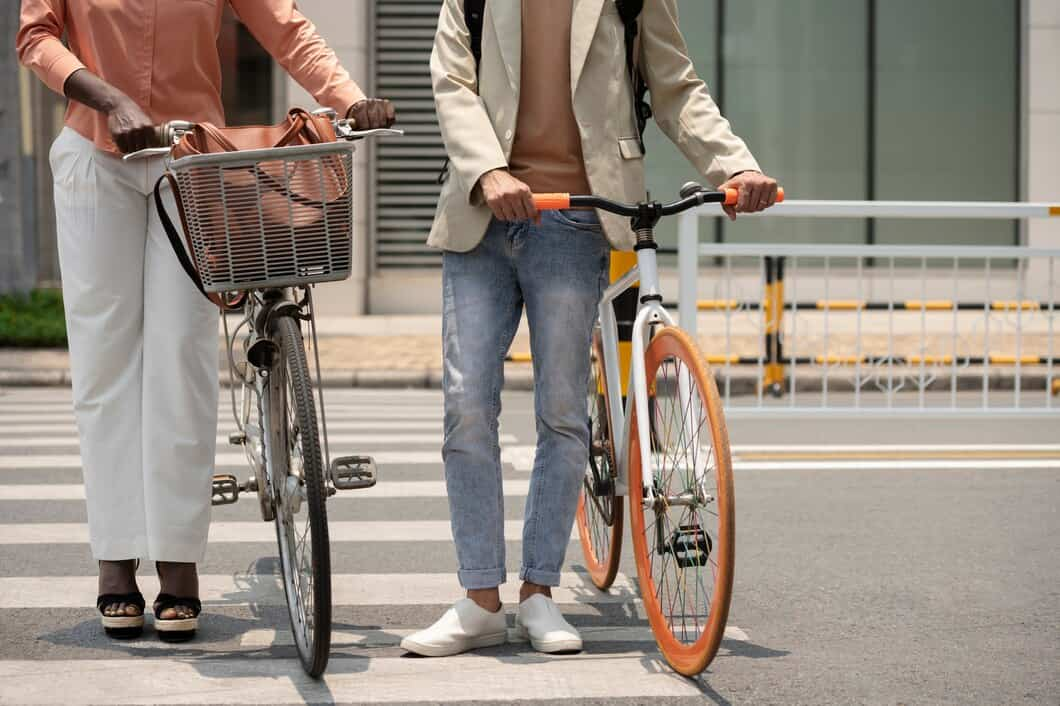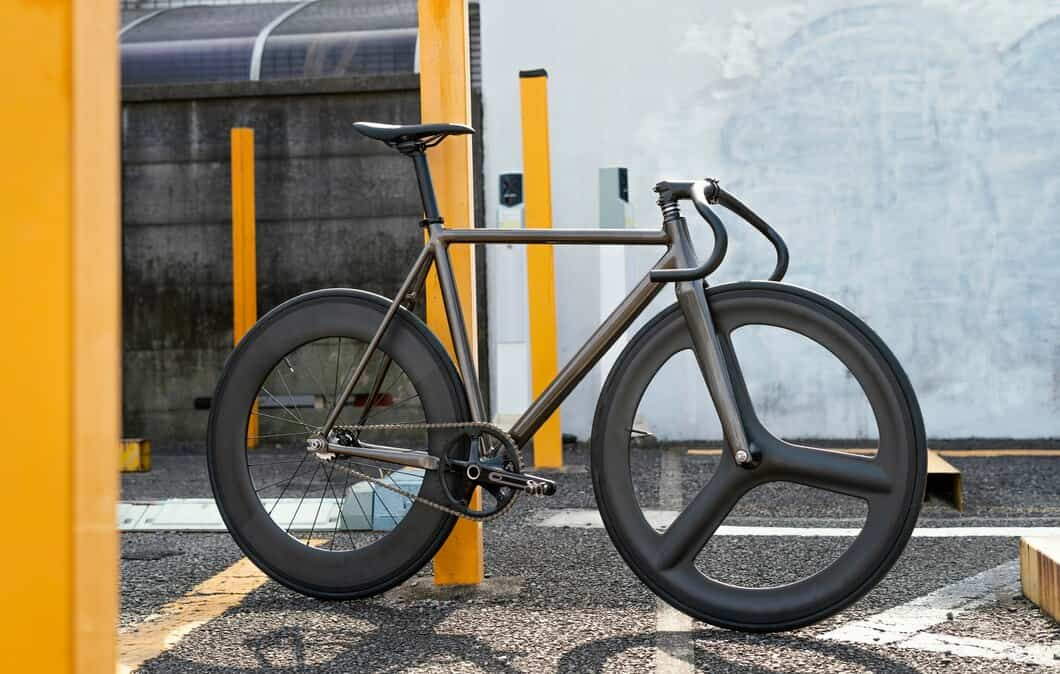How Fast Does A Typical E-bike Go?
Time: 08 Apr 2024 22:48

An electric bike (e-bike) is a bicycle with an integrated electric motor which can help propel the bike. E-bikes come in a variety of styles, including traditional upright bikes, step-through bikes, and folding bikes. They can also be equipped with a variety of features, such as headlights, taillights, and fenders.
E-bikes are becoming increasingly popular as a way to commute to work, run errands, or simply get around town. They offer a number of advantages over traditional bikes, including the ability to travel longer distances, climb hills more easily, and ride in headwinds with less effort. E-bikes are also a more environmentally friendly option than cars, as they produce zero emissions.
What is the average speed of an e-bike?
The average speed of an e-bike can vary widely depending on a number of factors, including the type of e-bike, the terrain, and the rider's fitness level. In general, however, most e-bikes have an average speed of between 15 and 20 miles per hour (24 to 32 kilometers per hour).
The type of e-bike can have a significant impact on its average speed. Class 1 e-bikes, which are the most common type of e-bike, have a maximum assisted speed of 20 miles per hour (32 kilometers per hour). Class 2 e-bikes have a maximum assisted speed of 28 miles per hour (45 kilometers per hour), and Class 3 e-bikes have a maximum assisted speed of 28 miles per hour (45 kilometers per hour).
The terrain can also affect the average speed of an e-bike. E-bikes that are ridden on flat terrain will typically have a higher average speed than e-bikes that are ridden on hilly terrain. The rider's fitness level can also affect the average speed of an e-bike. Riders who are in good physical condition will typically be able to ride an e-bike at a higher average speed than riders who are not in good physical condition.
It is important to note that the average speed of an e-bike is not the same as the maximum speed of an e-bike. The maximum speed of an e-bike is the highest speed that the e-bike can reach with the assistance of the electric motor. The average speed of an e-bike is the average speed that the e-bike is ridden over a period of time.
What factors affect the speed of an e-bike?
The speed of an e-bike is affected by a number of factors, including the power of the motor, the weight of the bike and rider, the terrain, and the wind.
The more powerful the motor, the faster the e-bike will be able to go.
However, a heavier bike and rider will slow the e-bike down.
Riding on hills or into the wind will also slow the e-bike down.
How fast can e-bikes go with pedal assist?
E-bikes with pedal assist can help you travel faster than traditional bicycles. The amount of speed increase depends on the type of e-bike you have and the amount of power you apply to the pedals. Generally speaking, pedal assist e-bikes can help you reach speeds of 15-25 miles per hour (24-40 kilometers per hour) with moderate effort.
The motor on an e-bike provides extra power to your pedaling, which can help you accelerate more quickly and maintain a higher speed. However, it's important to note that pedal assist e-bikes are not throttle-controlled like electric motorcycles. You must still pedal to make the bike move forward, but the motor will provide additional power to help you reach and maintain your desired speed.
The speed of an e-bike with pedal assist is also affected by factors such as the terrain you're riding on, the amount of weight you're carrying, and the wind conditions. If you're riding on a flat surface with no wind, you'll be able to reach higher speeds than if you're riding on a hill or into a strong headwind.
Overall, e-bikes with pedal assist can be a great way to get around town or commute to work. They can help you travel faster and farther than traditional bicycles, and they can make riding up hills and into headwinds much easier. If you're considering buying an e-bike, be sure to look for one with a pedal assist feature that meets your needs.
How fast can e-bikes go on throttle only?

E-bikes have a throttle-only mode that allows riders to control their speed without pedaling. The speed of an e-bike in throttle-only mode depends on several factors, including the type of motor, the size of the battery, and the terrain. Generally, e-bikes with larger motors and batteries can reach higher speeds than those with smaller motors and batteries.
In the United States, e-bikes are classified as Class 1, Class 2, or Class 3 e-bikes. Class 1 e-bikes have a maximum assisted speed of 20 mph (32 km/h) on throttle-only mode. Class 2 e-bikes have a maximum assisted speed of 20 mph (32 km/h) with pedal assist and a maximum speed of 28 mph (45 km/h) on throttle-only mode. Class 3 e-bikes have a maximum assisted speed of 28 mph (45 km/h) with pedal assist and a maximum speed of 28 mph (45 km/h) on throttle-only mode.
E-bikes with throttle-only mode can be a convenient and efficient way to get around town. They are especially useful for riders who have difficulty pedaling or who want to avoid sweating. However, it is important to remember that e-bikes are still bicycles and should be ridden with caution. Riders should always wear a helmet and obey all traffic laws.
How fast can Class 1 e-bikes go?

How fast can Class 2 e-bikes go?
Class 2 e-bikes are a popular choice for commuters and recreational riders alike. They offer a balance of speed and efficiency, making them a great option for getting around town or exploring new trails. But just how fast can Class 2 e-bikes go?
The answer to that question depends on a number of factors, including the motor power, the rider's weight, and the terrain. However, in general, Class 2 e-bikes are limited to a top speed of 20 mph (32 km/h) with the motor engaged. This speed limit is in place to ensure that Class 2 e-bikes are safe to operate on bike paths and shared roads.
If you're looking for an e-bike that can go faster than 20 mph, you'll need to look at Class 3 e-bikes. Class 3 e-bikes are allowed to reach speeds of up to 28 mph (45 km/h) with the motor engaged. However, Class 3 e-bikes are not legal to operate on bike paths or shared roads in some jurisdictions.
No matter what type of e-bike you choose, it's important to follow the local laws and regulations regarding e-bike use. E-bikes can be a great way to get around town or explore new trails, but it's important to do so safely and responsibly.
How fast can Class 3 e-bikes go?
Class 3 e-bikes are the fastest type of e-bike, with a maximum assisted speed of 28 mph. This makes them a great option for commuters who want to get to work quickly and efficiently, or for riders who want to explore new trails at a higher speed. However, it's important to note that Class 3 e-bikes are not legal to ride on all roads, so be sure to check your local laws before you hit the road.
The speed of a Class 3 e-bike is determined by the motor's wattage and the rider's pedaling input. Motors with higher wattages will provide more assistance, allowing riders to reach higher speeds more easily. Additionally, riders who pedal faster will also experience higher speeds.
It's also important to consider the terrain when riding a Class 3 e-bike. On flat roads, riders will be able to reach the maximum assisted speed of 28 mph. However, on hills, the speed will be reduced due to the increased resistance.
Finally, it's important to wear a helmet when riding a Class 3 e-bike. E-bikes can reach high speeds, so it's important to protect your head in the event of a fall.
What is the fastest e-bike in the world?
The current world record for the fastest e-bike is 67.4 mph, set by cyclist Fred Rompelberg in 2019. This record was set on a custom-built e-bike with a powerful motor and a streamlined design.
It is important to note that this record is for a closed course. On public roads, the speed of e-bikes is limited by law. In most countries, e-bikes are classified as motorized vehicles and are subject to the same speed limits as other motorized vehicles.
However, some e-bikes are capable of reaching speeds of up to 28 mph. These e-bikes are typically classified as Class 3 e-bikes and are legal to ride on public roads in most countries.
How to increase the speed of an e-bike?
There are a few things you can do to increase the speed of your e-bike. One is to make sure that the battery is fully charged. A low battery will limit the amount of power that the motor can provide, which will in turn limit the speed of the bike.
Another way to increase the speed of your e-bike is to use the highest gear possible. The higher the gear, the more power that the motor can provide to the wheels, which will result in a higher speed.
Finally, you can also increase the speed of your e-bike by pedaling harder. The more you pedal, the more power that the motor will provide, which will in turn result in a higher speed.
By following these tips, you can increase the speed of your e-bike and make your rides more enjoyable.
Frequently Asked Questions

Summary
In general, the average e-bike can reach speeds of 15 to 28 mph (24 to 45 km/h) when using the motor's assistance. However, the actual speed may vary depending on factors such as the type of e-bike, the terrain, the rider's weight, and the level of pedal assist being used.
E-bikes are becoming increasingly popular as a mode of transportation, offering a convenient and eco-friendly way to get around. They are particularly well-suited for commuting, running errands, or simply exploring your surroundings.
Recommendation
How fast does a typical e-bike go?
An electric bike (e-bike) is a bicycle with an integrated electric motor which can help propel the bike. E-bikes come in a variety of styles, including traditional upright bikes, step-through bikes, a...
Is 20 mph fast on a ebike?
20 mph may seem like a relatively slow speed, but on an e-bike, it can feel much faster. This is because you're getting the assistance of the electric motor, which helps you to propel yourself forward...
How long does the average e-bike last
Electric bikes are becoming increasingly popular, but how long do they last? This article will explore the factors that affect the lifespan of an e-bike, including battery life, motor life, and frame...
Can I charge ebike after every ride?
Electric bikes are becoming increasingly popular, and with good reason. They're a great way to get around town, they're good for the environment, and they're a lot of fun to ride. However, one of the...
Can an electric bike go 60 mph?
An electric bike, often called an e-bike, is a human-powered bicycle with an integrated electric motor that can assist with propulsion. E-bikes are becoming increasingly popular as a way to reduce emi...



